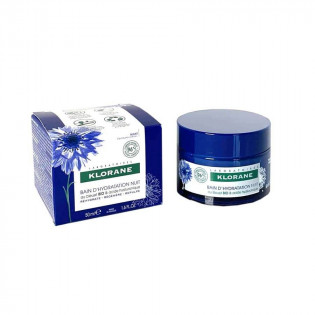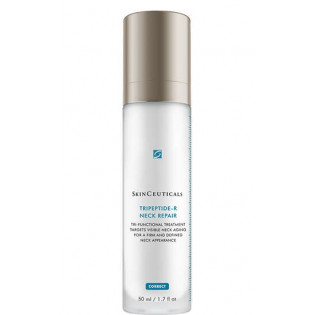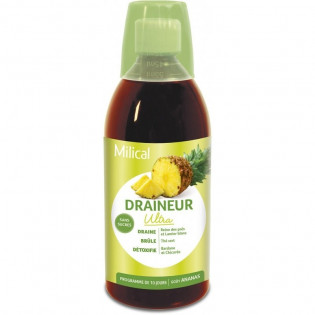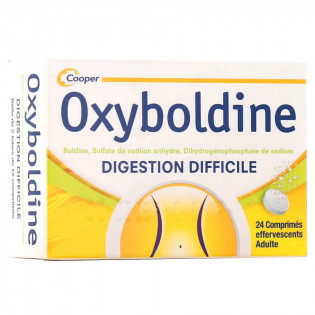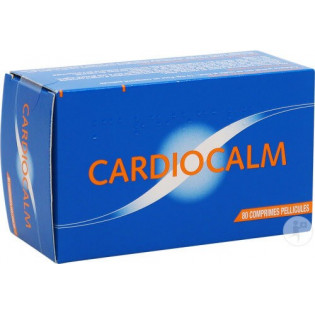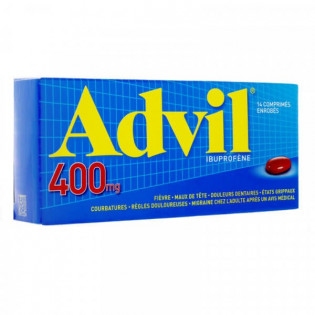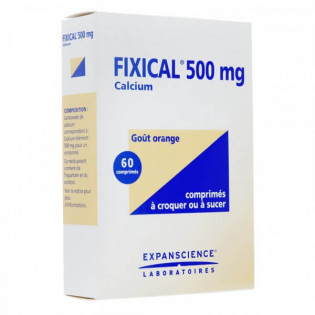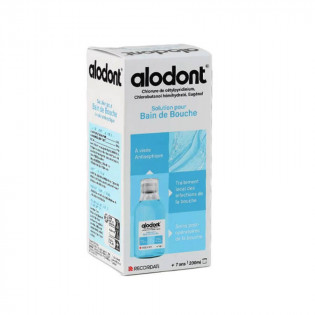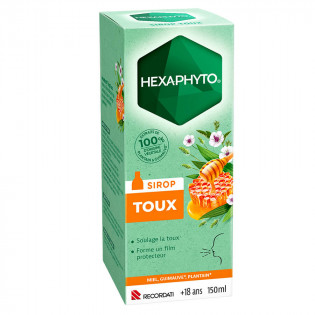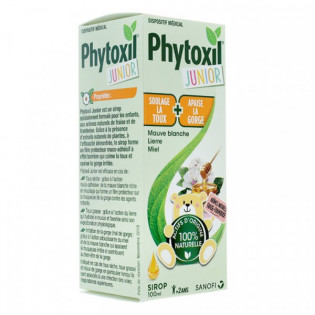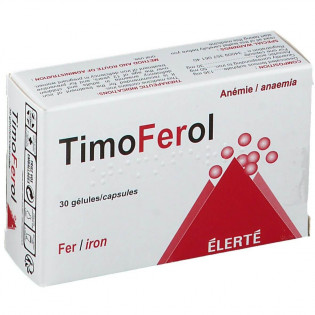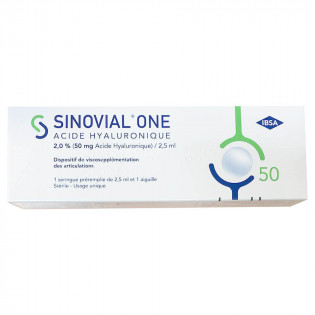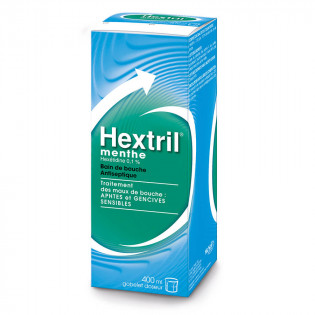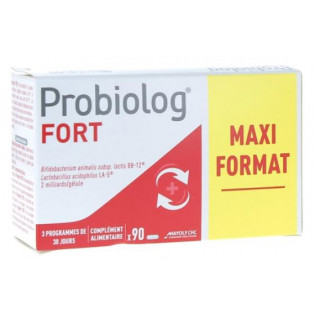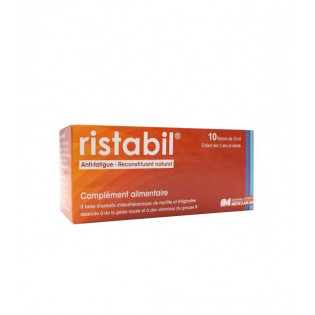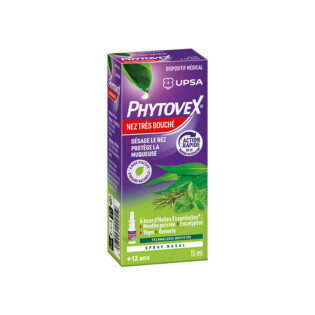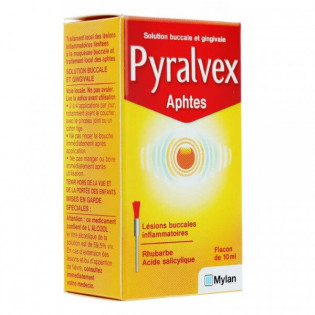COMPOSITION
per tablet: Acetylsalicylic acid 500 mg
Excipients: corn starch, granulated cellulose powder (Elcema G 250).
INDICATIONS
Symptomatic treatment of mild to moderate pain and/or febrile conditions.
DOSAGE AND ADMINISTRATION
To be taken orally.
The tablets should be swallowed as they are with a drink (e.g. water, milk, fruit juice), preferably with meals.
Taking the tablet is contraindicated in children under 6 years of age as it may lead to a miscarriage. Use another form.
Dosage:
Mild to moderate pain and/or febrile states:This presentation is reserved for adults and children weighing 30 kg or more (approximately 9 to 15 years).
For adults and children weighing more than 50 kg (from about 15 years of age): The maximum recommended daily dosage is 3 g of aspirin, i.e. 6 tablets per day. The usual dosage is 1 tablet of 500 mg, to be repeated if necessary after at least 4 hours. In case of more intense pain or fever, 2 tablets of 500 mg, to be renewed as needed after a minimum of 4 hours, without exceeding 6 tablets per day.
For elderly subjects: The maximum recommended daily dosage is 2 g of aspirin, i.e. 4 tablets per day. The usual dosage is 1 tablet of 500 mg, to be repeated if necessary after at least 4 hours. In case of more intense pain or fever, 2 tablets of 500 mg, to be repeated as needed after at least 4 hours, without exceeding 4 tablets per day.
In children from 30 to 50 kg (approximately 9 to 15 years): In children, it is imperative to respect the dosages defined according to the weight of the child and to choose an adapted presentation. The approximate ages according to weight are given for information purposes.
The recommended daily dose of acetylsalicylic acid is approximately 60 mg/kg, divided into 4 or 6 doses, i.e. approximately 15 mg/kg every 6 hours or 10 mg/kg every 4 hours.
For children weighing 30 to 40 kg (approximately 9 to 13 years of age), the dosage is 1 tablet per dose, to be repeated if necessary after 6 hours, but not to exceed 4 tablets per day; for children weighing 41 to 50 kg (approximately 12 to 15 years of age), the dosage is 1 tablet per dose, to be repeated if necessary after 4 hours, but not to exceed 6 tablets per day.
Frequency of administration: Systematic administration avoids oscillations in pain or fever: In children (30 kg to 50 kg, approximately 9 to 15 years): the doses should be regularly spaced, including at night, preferably 6 hours apart, and at least 4 hours apart (comply with the dosage specified above).In adults: the doses should be spaced at least 4 hours apart.
Duration of treatment: The patient should be advised not to use acetylsalicylic acid for more than 3 days in case of fever and 5 days in case of pain without the advice of a physician or dentist.
CONTRAINDICATIONS
Hypersensitivity to acetylsalicylic acid or to any of the excipients; history of asthma caused by the administration of salicylates or substances with similar activity, especially non-steroidal anti-inflammatory drugs.
Pregnancy beyond 24 weeks of amenorrhea (5 months of age) at doses above 100 mg daily (see Fertility/Pregnancy/Nursing).
Any constitutional or acquired bleeding disease.Bleeding risk.Severe hepatic impairment.
Severe renal insufficiency.Uncontrolled severe heart failure.
Methotrexate used in doses greater than 20 mg/week (see Interactions) and for anti-inflammatory doses (>= 1 g per dose and/or >= 3 g per day), or for analgesic or antipyretic doses (>= 500 mg per dose and/or < 3 g per day) of acetylsalicylic acid.
Oral anticoagulants for anti-inflammatory doses (>= 1 g per dose and/or >= 3 g per day), or for analgesic or antipyretic doses (>= 500 mg per dose and/or < 3 g per day) of acetylsalicylic acid and in a patient with a history of peptic ulcer disease (see Interactions).
WARNINGS and PRECAUTIONS
In case of association with other drugs, to avoid the risk of overdosage, check the absence of acetylsalicylic acid in the composition of the other drugs. In case of long-term administration of high-dose analgesic drugs, the occurrence of headache should not be treated with higher doses.
Regular use of analgesics, particularly combined analgesics, may lead to persistent kidney damage with a risk of renal failure.Reye's syndrome, a very rare but life-threatening condition, has been observed in children with evidence of viral infections (particularly chickenpox and flu-like episodes) receiving acetylsalicylic acid.
Therefore, acetylsalicylic acid should be used in these children only on medical advice, when other measures have failed.
If persistent vomiting, disturbances of consciousness or abnormal behaviour occur, acetylsalicylic acid should be discontinued.In some cases of severe G6PD deficiency, high doses of acetylsalicylic acid may have caused haemolysis. The administration of acetylsalicylic acid in G6PD deficiency should be under medical supervision.
In children under 1 month of age, the administration of acetylsalicylic acid is justified only in certain situations covered by the medical prescription.Monitoring of the treatment must be reinforced in the following cases:
history of peptic ulcer, digestive haemorrhage or gastritis; renal or hepatic insufficiency; asthma: the occurrence of asthma attacks in some subjects may be linked to an allergy to non-steroidal anti-inflammatory drugs or acetylsalicylic acid. In this case, this drug is contraindicated; breakthrough bleeding or menorrhagia (risk of increased size and duration of menstrual periods).
Gastrointestinal bleeding or ulcers/perforations may occur at any time during treatment without necessarily having any prior symptoms or history. The relative risk increases in the elderly, in patients with low body weight, in patients undergoing anticoagulant or antiplatelet therapy (see Interactions).
In case of gastrointestinal haemorrhage, treatment should be discontinued immediately. Given the anti-platelet aggregation effect of acetylsalicylic acid, which appears at very low doses and persists for several days, the patient should be warned of the risks of haemorrhage that may occur in the event of even minor surgery (e.g. dental extraction).The concomitant use of this drug is not recommended with :
oral anticoagulants, for analgesic or antipyretic doses (>= 500 mg per dose and/or < 3 g per day) of acetylsalicylic acid and in a patient with no history of peptic ulcer;oral anticoagulants, for antiaggregating doses of acetylsalicylic acid and in a patient with a history of peptic ulcer disease3 g per day), analgesic or antipyretic (>= 500 mg per dose and/or < 3 g per day) doses of acetylsalicylic acid;clopidogrel (outside the validated indications for this combination in the acute phase of coronary syndrome);glucocorticoids (except hydrocortisone in replacement therapy) for anti-inflammatory doses (>= 1 g per dose and/or >= 3 g per day) of acetylsalicylic acid;low molecular weight heparins (and related) and unfractionated heparins: curative doses and/or elderly subject and for anti-inflammatory (>= 1 g per dose and/or >= 3 g per day) or analgesic or antipyretic (>= 500 mg per dose and/or < 3 g per day) doses of acetylsalicylic acid;pemetrexed in patients with low to moderate renal function (creatine clearance between 45 ml/min and 80 ml/min);ticlopidine;uricosurics (see Interactions).
Acetylsalicylic acid modifies uricemia (at analgesic doses, acetylsalicylic acid increases uricemia by inhibition of uric acid excretion; at doses used in rheumatology, acetylsalicylic acid has a uricosuric effect).At high doses used in rheumatology, it is recommended to monitor for signs of overdosage. In the event of the appearance of ringing in the ears, reduced hearing and dizziness, the treatment modalities should be reassessed.In children, it is recommended to monitor salicylic acid levels, particularly when starting treatment.The use of this drug is not recommended in the case of breastfeeding.The tablet or capsule is contraindicated in children under 6 years of age because it may cause a false mouth.500 mg tablets are not suitable for children under 30 kg for whom there are more suitable doses.
INTERACTIONS
Drug Interactions :
Antiplatelet Risk: Several substances have been implicated in interactions due to their antiplatelet properties: abciximab, aspirin (acetylsalicylic acid), clopidogrel, epoprostenol, eptifibatide, iloprost and iloprost trometamol, tirofiban and ticlopidine.
The use of multiple antiplatelet agents increases the risk of bleeding, as does their combination with heparin and related molecules, oral anticoagulants, and other thrombolytics, and should be considered with regular clinical monitoring.
Contraindicated:
See Contraindications.
Oral anticoagulants for anti-inflammatory doses (>= 1 g per dose and/or >= 3 g per day), or for analgesic or antipyretic doses (>= 500 mg per dose and/or < 3 g per day) of acetylsalicylic acid and in case of history of peptic ulcer: increased risk of bleeding, especially in case of history of peptic ulcer.Methotrexate used in doses greater than 20 mg/week for anti-inflammatory doses (>= 1 g per dose and/or >= 3 g per day), or for analgesic or antipyretic doses (>= 500 mg per dose and/or < 3 g per day) of acetylsalicylic acid: increased toxicity, particularly hematologic, of methotrexate (decreased renal clearance by acetylsalicylic acid).
Not recommended:
See Warnings and Precautions.
Oral anticoagulants, for analgesic or antipyretic doses of acetylsalicylic acid (>= 500 mg per dose and/or < 3 g per day) and in the absence of a history of peptic ulcer: increased risk of bleeding.Oral anticoagulants, for antiaggregating doses of acetylsalicylic acid (50 mg to 375 mg daily) and in case of previous peptic ulcer: increased risk of bleeding, especially in case of previous peptic ulcer. Need to monitor bleeding time in particular.
Non-steroidal anti-inflammatory drugs, for anti-inflammatory doses (>= 1 g per dose and/or >= 3 g per day), or for analgesic or antipyretic doses (>= 500 mg per dose and/or < 3 g per day) of acetylsalicylic acid: increased risk of ulceration and GI bleeding.Glucocorticoids (except hydrocortisone in replacement therapy) for anti-inflammatory doses of acetylsalicylic acid (>= 1 g per dose and/or >= 3 g per day): increased risk of bleeding.
Low molecular weight heparins and related, and unfractionated heparins (curative doses and/or elderly subjects), for anti-inflammatory doses (>= 1 g per dose and/or >= 3 g per day) or for analgesic or antipyretic doses (>= 500 mg per dose and/or < 3 g per day) of acetylsalicylic acid : increased risk of bleeding (inhibition of platelet function) and assault of the gastroduodenal mucosa by acetylsalicylic acid. Pemetrexed: in patients with low to moderate renal function (creatinine clearance between 45 ml/min and 80 ml/min), risk of increased toxicity of pemetrexed (decreased renal clearance by acetylsalicylic acid at anti-inflammatory doses of >= 1 g per dose and/or >= 3 g per day)Ticlopidine: increased bleeding risk by addition of antiplatelet activities. Uricosurics (benzbromarone, probenecid): decrease of the uricosuric effect by competition of uric acid elimination at the level of the renal tubules.
Requiring precautions for use:
Clopidogrel (in the validated indications for this combination in the acute phase of coronary syndrome): increased risk of bleeding by addition of anti-platelet activities. Diuretics, for anti-inflammatory doses (>= 1 g per dose and/or >= 3 g per day) or for analgesic or antipyretic doses (>= 500 mg per dose and/or < 3 g per day) of acetylsalicylic acid: acute renal failure in dehydrated patients due to a decrease in glomerular filtration secondary to a decrease in renal prostaglandin synthesis. Also, reduced antihypertensive effect. Hydrate the patient and monitor renal function at the beginning of treatment.Converting enzyme inhibitors and angiotensin II receptor antagonists, for anti-inflammatory doses (>= 1 g per dose and/or >= 3 g per day) or for analgesic or antipyretic doses (>= 500 mg per dose and/or < 3 g per day) of acetylsalicylic acid: acute renal failure in dehydrated patients, due to decreased glomerular filtration secondary to decreased renal prostaglandin synthesis. Also, reduced antihypertensive effect. Hydrate the patient and monitor renal function at the beginning of treatment.Methotrexate used in doses of 20 mg/week or less, for anti-inflammatory doses (>= 1 g per dose and/or >= 3 g per day) or for analgesic or antipyretic doses (>= 500 mg per dose and/or < 3 g per day) of acetylsalicylic acid: increase in toxicity, particularly haematological toxicity, of methotrexate (decrease in its renal clearance by acetylsalicylic acid) Weekly monitoring of blood counts during the first weeks of the combination. Methotrexate used at doses higher than 20 mg/week, for anti-platelet aggregation doses of acetylsalicylic acid (50 to 375 mg/day): increased toxicity, particularly hematological, of methotrexate (decreased renal clearance by acetylsalicylic acid). Weekly blood count monitoring during the first weeks of the combination. Pemetrexed: in patients with normal renal function, risk of increased toxicity of pemetrexed (decreased renal clearance by acetylsalicylic acid at anti-inflammatory doses, i.e. >= 1 g per dose and/or >= 3 g per day). Gastrointestinal topicals, antacids and charcoal: decrease in the absorption of acetylsalicylic acid from the gastrointestinal tract. Take gastrointestinal topicals, antacids or charcoal at a distance (at least 2 hours) from acetylsalicylic acid.
Oral anticoagulants, for antiaggregating doses of acetylsalicylic acid (50 mg to 375 mg daily): increased risk of bleeding. Non-steroidal anti-inflammatory drugs, for antiaggregating doses of acetylsalicylic acid (50 mg to 375 mg daily) in one or more doses: increased risk of ulceration and digestive bleeding.Glucocorticoids (except hydrocortisone in replacement therapy), for analgesic or antipyretic doses (>= 500 mg per dose and/or < 3 g per day) of acetylsalicylic acid: increased risk of bleeding.Low molecular weight heparins and related, and unfractionated heparins (curative doses and/or elderly subjects), for antiaggregating doses of acetylsalicylic acid (from 50 mg to 375 mg per day): increased risk of bleeding (inhibition of platelet function) and aggression of the gastroduodenal mucosa by acetylsalicylic acidLow molecular weight heparins and related drugs, and unfractionated heparins (preventive doses): the combined use of drugs acting at various levels of hemostasis increases the risk of bleeding. Thus, in patients under 65 years of age, the combination of preventive doses of heparins (low molecular weight and related or unfractionated heparins) with acetylsalicylic acid, regardless of the dose, should be taken into account while maintaining clinical and possibly biological monitoring.Selective serotonin reuptake inhibitors (citalopram, escitalopram, fluoxetine, fluvoxamine, paroxetine, sertraline): increased risk of bleeding.
FERTILITY / PREGNANCY / LACTATION
Pregnancy:
Low doses, less than 100 mg per day: Clinical studies show that doses below 100 mg/day appear to be safe for extremely limited obstetrical uses requiring specialized monitoring.Doses between 100 mg and 500 mg per day: There is insufficient clinical experience with doses between 100 mg and 500 mg per day. Therefore, the following recommendations for doses above 500 mg per day apply to these doses.
Doses greater than or equal to 500 mg daily:
Inhibition of prostaglandin synthesis may affect the course of pregnancy and/or the development of the embryo or fetus. Data from epidemiological studies suggest an increased risk of miscarriage, heart defects and gastroschisis after treatment with a prostaglandin synthesis inhibitor in early pregnancy. The absolute risk of cardiovascular malformation increased from less than 1% to approximately 1.5%. The risk appears to increase with dose and duration of treatment.
In animals, administration of a prostaglandin synthesis inhibitor has been shown to cause increased pre- and post-implantation loss and increased embryo-fetal lethality. In addition, a higher incidence of certain malformations, including cardiovascular malformations, has been reported in animals given a prostaglandin synthesis inhibitor during the organogenesis phase of gestation. Therefore, unless absolutely necessary, acetylsalicylic acid should not be prescribed during the first 24 weeks of amenorrhea (5 completed months of pregnancy). If acetylsalicylic acid is administered to a woman who wishes to become pregnant or is less than 6 months pregnant (5 months of age), the dose should be as low as possible and the duration of treatment as short as possible.
After 24 weeks of amenorrhea (5 months of age), all prostaglandin synthesis inhibitors may expose the fetus to:cardiopulmonary toxicity (premature closure of the ductus arteriosus and pulmonary hypertension);renal dysfunction which may progress to renal failure associated with oligohydramnios
In late pregnancy, the mother and the newborn may experience:prolonged bleeding time due to an anti-aggregation action which may occur even after very low doses of the drug;inhibition of uterine contractions resulting in delayed term or prolonged delivery.
Therefore, acetylsalicylic acid is contraindicated beyond 24 weeks of amenorrhea (5 completed months).
Breastfeeding:
Because acetylsalicylic acid passes into breast milk, this drug is not recommended during lactation.
DRIVING AND USE OF MACHINERY
No effect on the ability to drive and use machines has been observed.
ADVERSE REACTIONS
Gastrointestinal effects: abdominal pain; overt or covert gastrointestinal bleeding (hematemesis, melena, etc.) responsible for iron deficiency anemia. These hemorrhages are more frequent with higher doses; gastric ulcers and perforations.
Central Nervous System Effects: Headache, dizziness, sensation of decreased hearing, ringing in the ears;
which are usually the hallmark of an overdose.
Hematological effects: Hemorrhagic syndromes (epistaxis, gingivorrhagia, purpura, etc.) with increased bleeding time. This action persists from 4 to 8 days after stopping acetylsalicylic acid. It may create a bleeding risk in case of surgery.
Hypersensitivity reactions: Urticaria, skin reactions, anaphylactic reactions, asthma, angioedema.
Reye's syndrome in children (see Warnings and Precautions).
OVERDOSAGE
Poisoning is to be feared in the elderly and especially in young children (therapeutic overdose or frequent accidental intoxication) where it can be fatal.
Clinical symptoms: Moderate intoxication: ringing in the ears, sensation of decreased hearing, headache, dizziness are the mark of an overdose and can be controlled by reducing the dosage.Severe intoxication:
In children, overdose may be fatal at 100 mg/kg in a single dose.
Symptoms include fever, hyperventilation, ketosis, respiratory alkalosis, metabolic acidosis, coma, cardiovascular collapse, respiratory failure, severe hypoglycemia.
Emergency treatment: Immediate transfer to a specialised hospital.Digestive decontamination and administration of activated charcoal.Control of acid-base balance.Alkaline diuresis to obtain a urine pH between 7.5 and 8, possibility of haemodialysis in severe intoxications.Symptomatic treatment.
PHARMACODYNAMICS
Other analgesics and antipyretics (ATC code: N02BA01).
Acetylsalicylic acid belongs to the group of non-steroidal anti-inflammatory drugs with analgesic, antipyretic and anti-inflammatory properties. Its mechanism of action is based on the irreversible inhibition of cyclooxygenase enzymes involved in the synthesis of prostaglandins.
Acetylsalicylic acid also inhibits platelet aggregation by blocking platelet synthesis of thromboxane A2.
PHARMACOKINETICS
Acetylsalicylic acid is rapidly and almost completely absorbed orally. Peak plasma levels are reached within 25 to 60 minutes.
Absorption: Acetylsalicylic acid is rapidly and almost completely absorbed orally. The bioavailability of acetylsalicylic acid varies with dose: approximately 60% for doses below 500 mg and 90% for doses above 1 g due to saturation of hepatic hydrolysis.Acetylsalicylic acid undergoes rapid hydrolysis to salicylic acid (also an active metabolite).
Distribution:Acetylsalicylic acid and salicylic acid diffuse rapidly into all tissues. They cross the placental barrier and are found in breast milk.Salicylic acid is largely bound to plasma proteins (90%).Plasma half-life is 15 to 20 minutes for acetylsalicylic acid, 2 to 4 hours for salicylic acid.
Metabolism-Excretion: Acetylsalicylic acid is extensively metabolized in the liver. It is excreted primarily by the urinary tract as salicylic acid and the glucuronide conjugate, and as salicyluric acid and gentesic acid.
PRECLINICAL SAFETY
Mutagenic and Carcinogenic Potential: Acetylsalicylic acid has been extensively studied in preclinical in vitro and in vivo studies, the results of which have revealed no reason to suspect a mutagenic effect. Long-term studies in rats and mice have not indicated any carcinogenic effects of acetylsalicylic acid.
STORAGE CONDITIONS
Shelf life: 4 years.
Store at a temperature not exceeding + 30 °C.
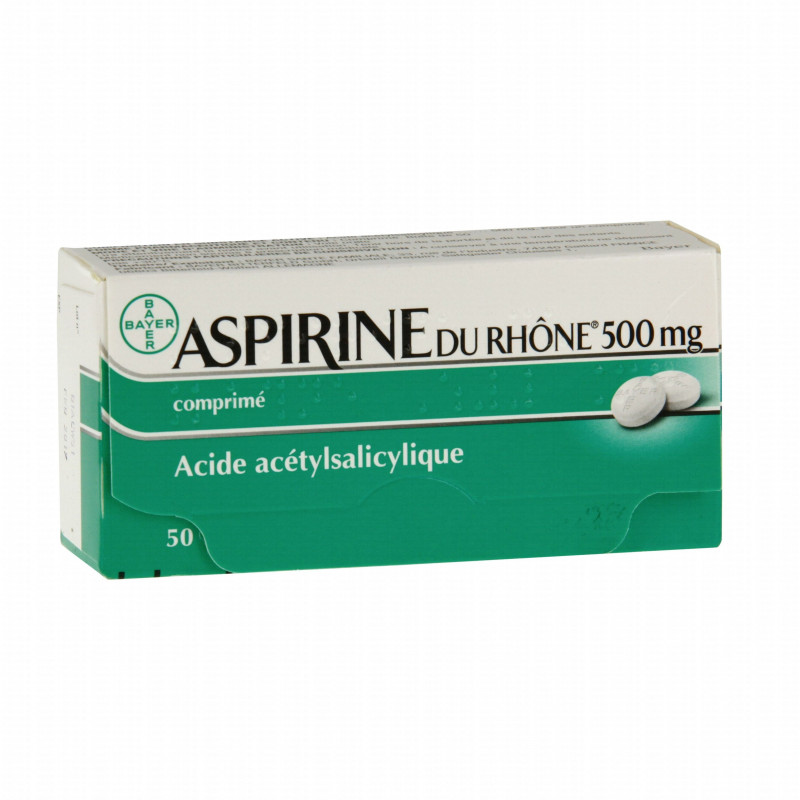
 Français
Français English
English
